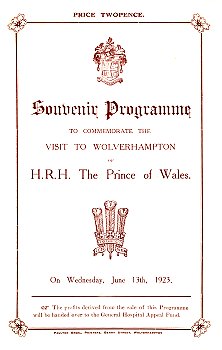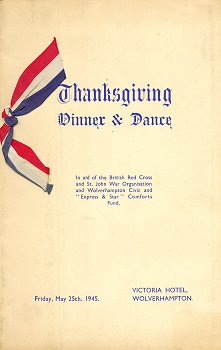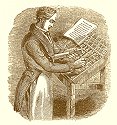 |
Wolverhampton Printers
A short history - page 2
|

|
We have no record of any printer in
the rural parishes, such as Tettenhall, Bushbury and Penn, but Bilston
was well provided for. Bilston's earliest printer appears to have
been Stephen Bassford”, who published a pamphlet in 1808.
He had an apprentice,
William Hackett, who, after serving his time, set up as a printer
on his own account.
Lawley’s longest report on a Bilston printer is on Francis Nokes.
“I have now to record here the death of Mr. Francis Nokes, an
old, respected and well-known Bilston printer.
He was born at Leicester on the 19th October 1795, and
served his apprenticeship on the Leicester Journal.
When he left that paper he came to Wolverhampton to superintend
the business of Mr. Thomas Simpson, father of the late Mr. Simpson.
He commenced business on his own account in the stone house at
the left hand corner of Oxford Street, Bilston, in the year 1822,
afterwards removing to 9 Church Street, where he died much respected,
January 18th, 1873, aged 78 years.
His son, the present Postmaster of Bilston carried on the
business for several years, and started the Bilston herald, now
denominated the Midland Herald, and he was succeeded by Mr. G. Sutton.”
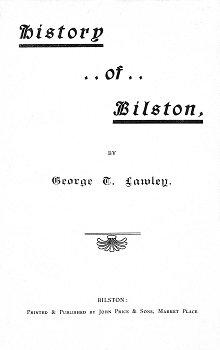
John Price & Sons, Market Place, Bilston,
printed Lawley's History of Bilston, in 1893. |
But we also come across John Price.
Lawley’s approach is to see him as a writer first and
foremost: “The next Bilston writer was John Price, who was worthy of
special notice because he was a printer, and personally
superintended the printing of his own productions.
He was born in Bilston in 1775 and died in April 1849, aged 74
years”.
An urge to print his own books may have been the origin of this
firm but, if it was, it developed into something considerably
more and undertook all sorts of printing and continues to do so
in 2003.
Lawley’s Bibliography was itself printed by Price and Bebee.
John Price certainly became a large firm and it continues to
this day.
As we move on to the 20th century both Lawley’s
“Bibliography of Wolverhampton” and Mander’s “Early
Wolverhampton Books and Printers" desert us.
In Bilston we can pick out James Wilkes who were pioneers
in continuous stationery and computer forms and produced on a
national scale. |
In Wolverhampton Manders printing ink was reaching an
international market and it seems that Braithwaites, the binders,
became of national significance as did the Engraving Company.
Of the printers, Alfred Hinde and Whiteheads and
Gibbons and Paultons
all produced on a large scale and numerous smaller printers throng the
lists of the trade directories.
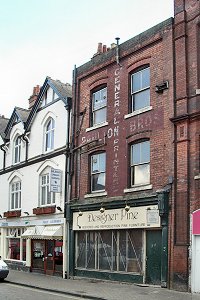 |
Paulton's had two premises in
Berry Street. The one on the right looks as though it may have been purpose built. |
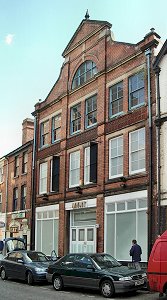 |
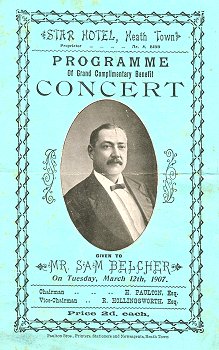 |
The programme of 1907, left,
is printed by "Paulton Bros, Printers, Stationers and Newsagents,
Heath Town". They may have had a branch at Heath Town or it
may be that they originated from there.
The souvenir programme, below
left, is by "Paulton Bros., Printers, Berry Street, Wolvrhampton.
The programme, below right,
has a real ribbon in it. |
In the 20th century many of the printers were simply
printers. Many printers did
other things as well, from some of the earliest noted, who seemed to
have a penchant for selling patent medicines along with the books, to
the many who sold general stationery along with the stationery they had
printed. Even firms like Alfred Hinde, who did all sorts of
printing from large books to letterheads, also ran a large stationers
which included dealing in foreign stamps in its business.
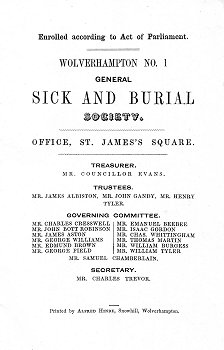 |
|
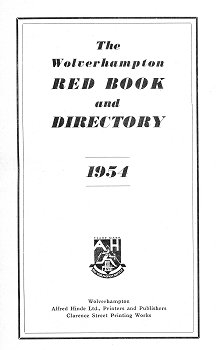 |
| Society rule book by Alfred Hinde,
Snow Hill. Undated but the rules were adopted in
1854. |
|
Alfred Hinde Ltd. describe
themselves here as printers and publishers, Clarence Street
Printing Works. They published the Red Book for very many
years. |
|
Whiteheads will be remembered by many as stationers as much as
printers and in this they continued a long tradition.
They, like others, printed a wide range of material.
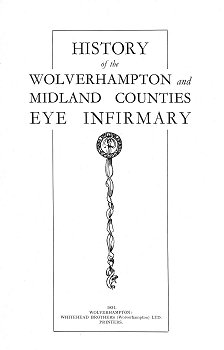 |
|
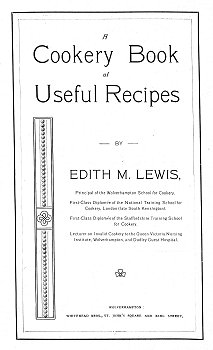 |
| This anonymous history was printed by
"Whitehead Brothers (Wolverhampton) Ltd, in 1931. |
|
Edith Lewis was the
Principal of the Wolverhampton School for Cookery, Darlington
Street. |
|
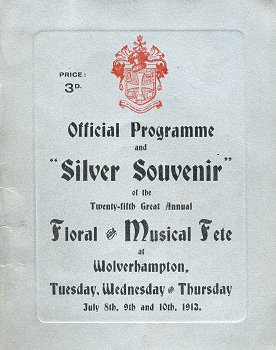 |
|
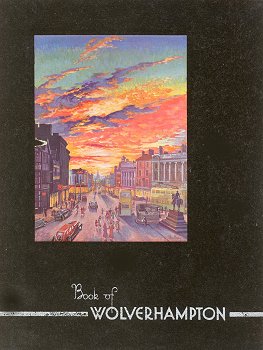 |
| In 1913 Whiteheads printed this
programme on silver paper. |
|
This Wolverhampton
handbook was printed by Whitheads. The binding is in black
flock with silver print and a laid on picture of sunset
over Darlington Street. |
|
As communications speeded up and
computers started to take over the printing trade, most, though not of
course all, local printers disappeared and their function was largely
replaced by copy shops. One interesting exception is that the
Express and Star, which took to computerisation early, built up
sufficient expertise in the field of computers and newspapers as to be
able to act as consultants both nationally and internationally - even
though this operation, when sufficiently established, actually moved out
of Wolverhampton to Albrighton.
Much of the information in this exhibit is taken from “The
Bibliography of Wolverhampton” by George T. Lawley, Bilston, 1890 and
“Early Wolverhampton Books and Printers” by Gerald Poynter Mander,
which, surprisingly, does not mention a publisher or date of
publication. But the
author’s introduction is dated 1922.
The work was printed by Whitehead Brothers (Wolverhampton) Ltd.,
a firm of printers not mentioned in either book.
Both Lawley and Mander are chiefly interested in books printed
in, published in or written by, people connected with Wolverhampton.
Lawley is content to consider works of poetry, politics and
religion, and to give them all equal weight.
Mander dismisses the books concerned with politics and religion
as “dead, drab, dreary and dull” and then provides a chapter about
playbills. But other than
that neither has much to say about other non-book printed items, such as
commercial printing, the stock in trade of most local jobbing printers.
For that, and other reasons, the printers they mention do not
form an exhaustive list of Wolverhampton printers. And neither does this
website. Such lists could
be made up from local trade directories and might give some idea of the
number of printers in the town and would give a rough indication of the
expansion of the trade.
|

|
|
Return to the
Printing Hall |
|





